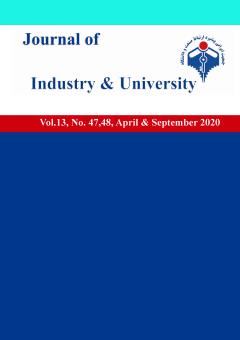-
-
List of Articles
-
Open Access Article
1 - Industry-university relationship: lessons learned and experiences gained
mohammad mahdi fanaei -
Open Access Article
2 - A look at the structure of research management in Germany
Gevork grptian -
Open Access Article
3 - The Fourth Industrial Revolution and the Necessary Approaches for Scientific, Economic and Industrial Policymakers
Ali Akbar Safavi -
Open Access Article
4 - Government, university and industry collaborations
fatollah ommi mohammadreza salimi -
Open Access Article
5 - Images and macro-plans of the future industry of leading countries Implications, findings; Lessons for government, academia and industry
Mohammad reza Karimi ghohroudi masoud shafiee -
Open Access Article
6 - Necessity and methods of developing interaction and cooperation between university and industry
mohammad saeid seif saeid jahanjiri -
Open Access Article
7 - Entrepreneurial University, Requirements and Musts
heydar mirfakhreddin -
Open Access Article
8 - identifying the obstcales of knowledge based spinoff companies in Islamic Azad University
hakimeh niky esfahlan mohammad reza hallaj yousefy heidar mortezapour -
Open Access Article
9 - Develop a strategic model for the relationship between the university and "industry" with the aim of attracting students
Mahdi Bahardoost fariba hanifi hasan shahrakipor -
Open Access Article
10 - Designing and validating the quality management model of research activities of faculty members of universities
majid darabi -
Open Access Article
11 - On the way to entrepreneurial university; Entrepreneurial University from theory to practice
Hossein Samadi-Miarkolaei Hamzeh Samadi-Miarkolaei -
Open Access Article
12 - Reviewing and evaluating the resolutions of the 21st National Congress in the direction of tripartite cooperation between the government, academia and industry
mohammadreza salehi masoud shafiee
-
The rights to this website are owned by the Raimag Press Management System.
Copyright © 2017-2026







